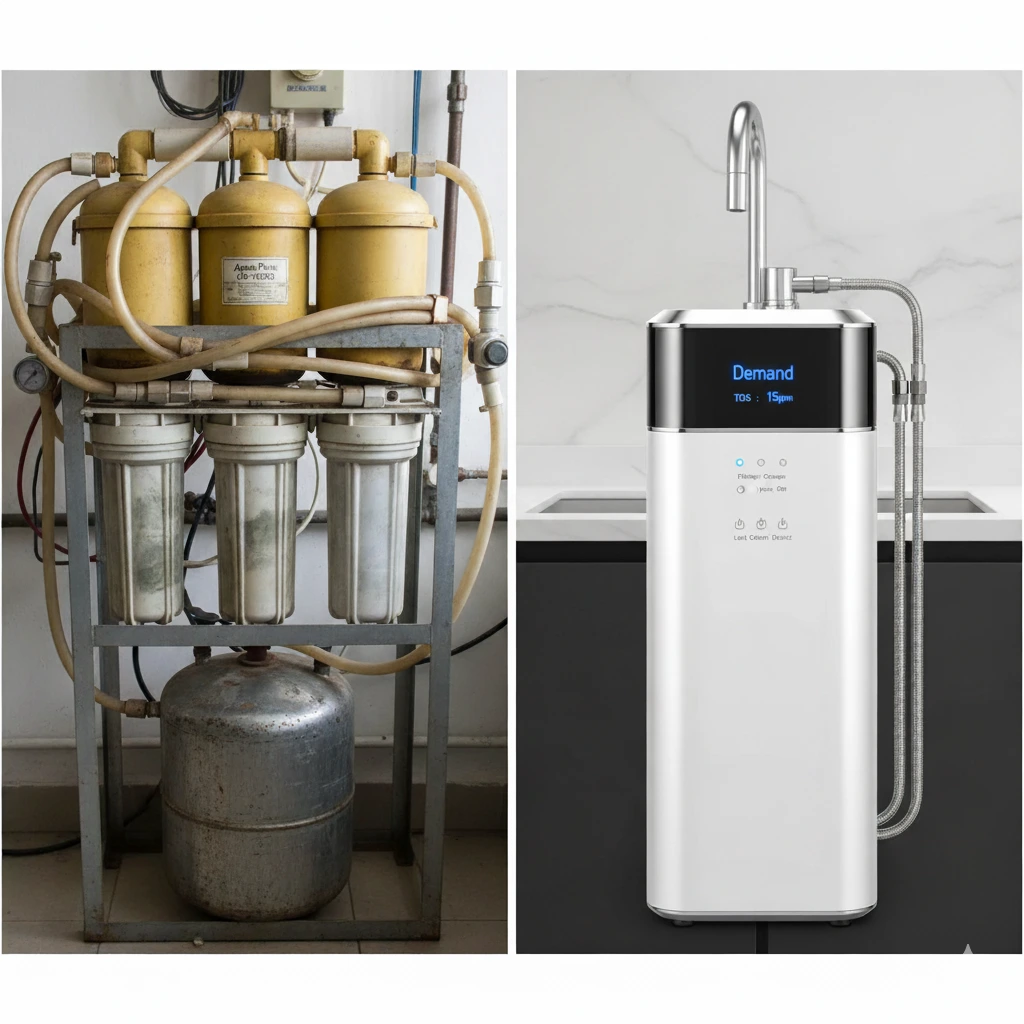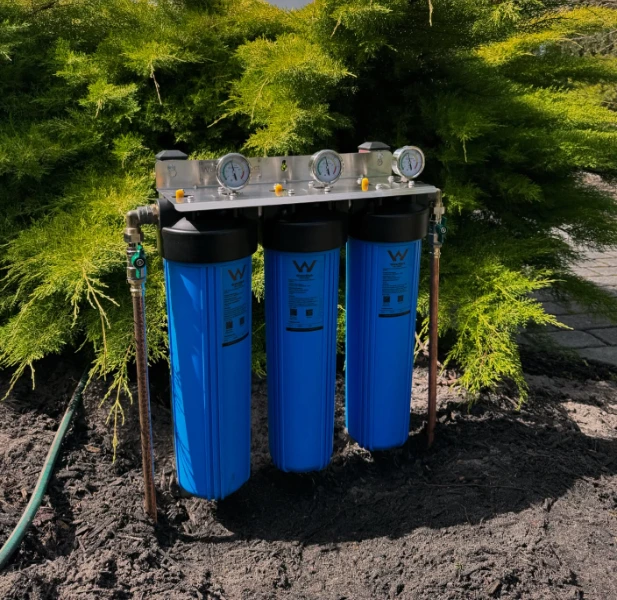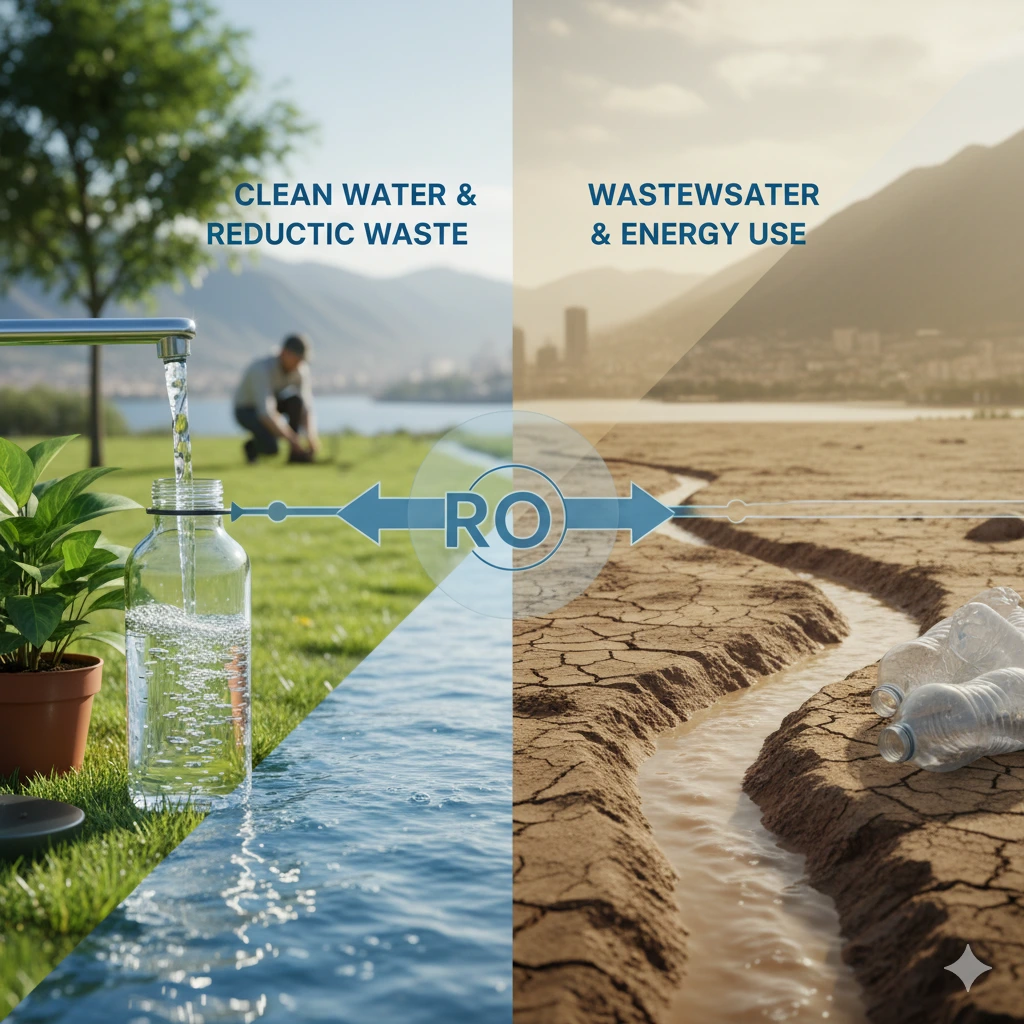Table of Contents

INTRODUCTION:
This blog post will consider the fascinating evolution of Reverse Osmosis Technology, from its formation as an innovative technology largely utilized in large-scale industries, to an accepted water purification technology in homes throughout the modern Australian lifestyle. Safe drinking water is more than a convenience; it is vital to our continued health and well-being. For decades, Australians have expressed concern for water quality – whether from urban pipelines, agricultural runoff, or industry-polluted supply. These continual issues have created acceptance of Reverse Osmosis Technology as a trusted and reliable method for improving water quality.
By reviewing the history, scientific basis, industrial use, and final adaptation for domestic use, we can begin to understand its importance, from desalination plants driving water supplies in drought-affected areas to stylish under-sink units in modern kitchen spaces in homes. Reverse Osmosis Technology has always been modern and evolving. Today, Reverse Osmosis Technology is a conduit of innovation and originality for Australian families searching for safe, clean, and ultimately good-tasting water.
The Origins of Reverse Osmosis Technology
The genesis of reverse osmosis technology happened in the mid-twentieth century when the world seriously recognized the issue of water deficiency. Scientists had established that forcing water through a semipermeable membrane would purge the liquid of dissolved salts and other impurities selectively. The importance of this discovery was recognized as an efficient and sustainable method for desalinating seawater.
In its infancy, reverse osmosis technology was not designed for home use. Its original purpose was for government research and military applications. In those early years before domestic use and acceptance, the military and naval forces needed reliable sources of fresh water, namely for military outposts in deserts and for naval forces operating from the sea. The potential for reverse osmosis to convert seawater or brackish water into fresh drinking water was a notable life-saving technology for survival, agricultural use, and to facilitate long-term decisions about living and relying on a portable source of freshly dehydrated water.
As the driest inhabited continent on earth, Australia recognized the potential quickly. With regular droughts and inconsistent rainfall, governments began to put money into desalination projects as early as the 1960s. Reverse osmosis technology was seen as a way to secure freshwater supplies, particularly for cities near coastlines – Perth, Adelaide, and Sydney, as examples. Play at scale, what started as experimental projects has now become major desalination plants, still supplying many millions of Australians.
Industrial Applications and Early Advancements
The earliest uses of reverse osmosis technology were in industries that required extremely pure water for delicate processes. Examples of these industries included pharmaceuticals, electronics, and energy. For example, a pharmaceutical manufacturer could compromise the effectiveness of their medicines by allowing even tiny amounts of unwanted impurities. Similarly, an electronics manufacturer could render their microchips inoperable if they relied on water containing unwanted contaminants for cleaning.
During the 1970s and 1980s, industries across the globe, including Australia, invested in reverse osmosis plants. Power plants used it for cooling systems, breweries and beverage manufacturers used it, and labs used it for research. All of these industrial applications pushed scientists and engineers to advance the production of reverse osmosis water filtration systems even further.
Some of the significant developments that both represented and caused new energy efficiencies in the latter parts of the century included:
- Improved membrane materials that would improve efficiency and durability.
- Energy recovery systems that would reduce the total power consumption of RO plants.
- Modular plant designs that would allow the systems to be scaled up or down according to industrial needs.
Industries in Australia particularly benefited from these developments because they required reliable water purification systems in locations with low-quality groundwater, such as mining. This led to household systems, since the technology was refined, efficient, and more affordable as a result of larger-scale industrial systems.
The Shift Towards Household Use
Reverse Osmosis Technology first entered discussions in the public consciousness when it was perceived as being prohibitively expensive, cumbersome, and overly complex for general home use. Throughout the 1990s and the early part of the new millennium, consumers became more concerned about drinking water safety and grew more interested in Water Filtration and Reverse Osmosis solutions. In Australia, growing public health concerns regarding the drinking water safety from continued fluoride, chlorine byproducts, heavy metals, or agricultural chemicals led to many families searching for alternatives to their tap water.
Initially, households were looking to purchase bottled water and basic carbon filters. Both options had their limitations, however. Bottled water presents burdens of high costs and environmental concerns, while simple carbon filters do not generally deliver a solution to remove dissolved salts, heavy metals, fluoride, chlorine by-products, and others. A natural solution for safer drinking water alternatives became Reverse osmosis technology.
The first household RO units were large and needed to be professionally installed, with large storage tanks to provide families with drinking water. Families also needed to replace filters regularly, and the systems were best suited for homes with high water pressure. However, early adopters in Australia saw the potential for family health safety. Families living outside of the major cities with poor water quality, or families living in older parts of the city concerned with water flow through old water pipes, began buying systems.
By the beginning of the 2000s, household systems became smaller, less expensive, and easier to use. Family units of under-the-sink systems grew in popularity, with families having a ready and constant supply of purified water for drinking, cooking, or even brewing tea or coffee. This shift represented the true democratization of Reverse Osmosis Technology, bringing industrial-level purification directly to family kitchens.
How Reverse Osmosis Technology Works in Modern Homes

When we comprehend how reverse osmosis technology works at home, it is easy to appreciate how successful it is compared to filtration systems. The RO units in existence today have several stages of purifying water, and the role of each step is as follows:
1. Pre-filtration step:
- This step removes sediment, dust, sand, and rust.
- It was designed primarily to protect the delicate RO membrane from clogging or damage.
2. Carbon filtration step:
- This eliminates chlorine, chloramine, pesticides, and many common industrial solvents.
- This step also improves the taste and odor of the water before the water undergoes the RO process.
3. Reverse osmosis membrane stage:
- This is the crux of the whole system.
- This intricately designed membrane blocks dissolved salts, fluoride, arsenic, nitrates, lead, mercury, and many other microscopic contaminants.
- RO systems can remove up to 99 per cent of all impurities.
4. Post-filtration or polishing filter:
- Provides final purification for taste.
- This step makes sure that the water is fresh, clean, and ultimately ready to drink.
5. Mineral filter (optional):
- This is designed to put back minerals such as calcium and magnesium.
- In addition to creating better-tasting water, this simple filter can assist in balancing pH.
Today’s systems in Australian homes will provide better benefits than just supplying safe drinking water. It will benefit families for cooking and protect domestic appliances such as kettles and coffee machines from scale buildup as a result of drinking water. For families, it will provide peace of mind knowing all glasses of drinking water have been purified from harmful contaminants.
Technological Innovations and Modern Advancements
Reverse osmosis technology has advanced significantly since the early industrial period. Improved design and efficiency have made reverse osmosis systems more sustainable and practical for both homes and commercial use.
Some important modern advancements are:
- Tankless RO systems that make purified water accessible whenever we need it, saving valuable kitchen/preparation space.
- Low-waste RO membranes that leverage an advanced design, allowing for low waste, utilizing up to 80% less water than predecessor systems.
- Smart monitoring digital indicators enable monitoring of filter life, water quality, and operational status of the system.
- Compact designs capable of being installed under-sink, on the counter, or even integrated into refrigerators.
- Eco-friendly options with systems that combine RO with UV purification and/or mineralization for health benefits.
These advancements are especially pertinent in Australia, as water scarcity is a recurring problem. Now households can have purified water and not feel guilty about the water wasted from its production. The improvements have been so compact that now even small apartments in Sydney/Melbourne can use these systems.
Why Reverse Osmosis Technology Matters for Australian Households
Australia is faced with a range of unique environmental issues that highlight the importance of reverse osmosis technology for water purification. Factors such as drought, ageing water infrastructure, agricultural runoff, and industrial waste all pose varying levels of threat to public water safety. Concerns about the cleanliness of public water supplies extend to urban environments, as the municipal water is typically treated and safe for drinking; however, contaminants such as fluoride, chlorine byproducts, or even microplastics worry Australians.
Reverse osmosis technology offers families a number of benefits, including:
Health benefits: Removes heavy metals and other toxic chemicals linked to long-term health issues.
Taste benefits: Eliminates unpleasant smells or tastes associated with chlorine or algae.
Cost-saving benefits: Eliminates the need to purchase bottled water, resulting in significant savings – likely, hundreds of dollars a year!
Environmental benefits: Reduces an individual’s plastic waste by mitigating the need to purchase bottled water.
Reverse osmosis technology also provides an extra layer of benefit to rural Australians who often drink bore water or untreated surface water. This helps mitigate the exposure to harmful contaminants or chemicals that standard filters do not remove. For parents or elders with compromised/weak immune systems, this means providing children with safe drinking water or reducing health risks from drinking contaminated water.
Environmental Impact of Reverse Osmosis Technology

Australia has a strong commitment to sustainability, especially when it comes to the implications of bottled water and plastic waste. By going with reverse osmosis technology, households are helping the environment in several ways:
- Less use of plastic water bottles.
- Reducing transportation-related emissions that come with water bottles.
- Advocating for sustainable water usage at home.
Some may argue that reverse osmosis systems waste water during the filtration. While it is true that certain RO systems waste water, current systems of filtration are more efficient than ever and are generally a net-positive when accounting for the overall environmental impact.
Public Awareness and Growing Adoption in Australia
In the last ten years, there has been increased public awareness in Australia relating to issues of water quality. From news articles on lead in drinking water to elevated awareness of PFAS (forever chemicals), families are being more proactive toward water safety.
Government campaigns, environmental stakeholders, and health care professionals are spotlighting the potential dangers of contaminants, including the use of protected advanced filtration systems. Calls to action for filtration systems have not been as recent as those for RO systems have, but they are becoming more frequent, which has led to the quickly growing trend of RO systems in homes, offices, and even schools across Australia.
The Future of Reverse Osmosis Technology
The development of reverse osmosis systems is not yet at its conclusion. We expect that some areas of focus over the coming years will be to make the systems, in general, more sustainable, efficient, and adaptable with smart home technologies.
Potential trends include:
- AI-driven monitoring to autonomously monitor the system for potential maintenance issues and automatically maintain optimal performance.
- Membrane technology using nanotechnology to potentially filter water more quickly and use less energy.
- Integration of renewable-powered systems for large-scale desalination installations in drought-prone areas in Australia.
- More affordable portable RO systems for camping, traveling, and emergency situations.
For Australia, this means greater resilience to water emergencies. As climate change continues to threaten us with droughts, reverse osmosis systems will likely play an even greater role in supporting reliable and safe water supplies for the generations to come.
Conclusion
The migration of reverse osmosis technology from industrial breakthrough to household essential represents a significant scientific journey that has involved decades of advancement and integration. What began as a process employed in large facilities for seawater desalination is now available in attractive and affordable under-sink systems for thousands of homes across Australia.
It effectively reduces almost all contaminants, enhances water taste, and provides peace of mind – making it the criterion and gold standard in water purification literature. For the average Australian, the technology represents more than just convenience; it represents health, safety, and sustainability. The potential for reverse osmosis technology to adapt will ensure it continues to play a part in modern living and ensure every sip of water is as pure and safe as it should be.
_edited_9.png)